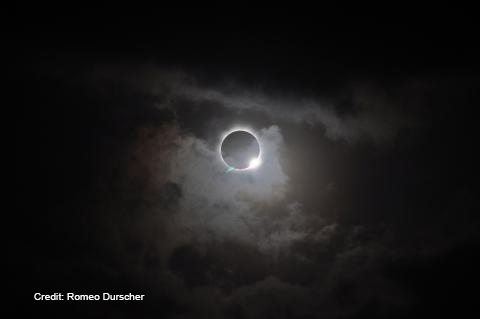On Aug. 21, some half a billion people will be in a position to observe a solar eclipse, in partial or total form, including 35 million in Canada, 391 million in the U.S., 119 million in Mexico, plus citizens of Central America, and in some parts of South America and northwestern Europe.
The path of totality – where the moon will completely cover the sun, leaving only the atmosphere of the sun (or the corona) visible – will cover land from Salem, Ore., to Charleston, S.C.
The last total eclipse viewed from the United States occurred on Feb. 26, 1979. The eclipse’s path traced through the northwestern states and Saskatchewan, Manitoba, Ontario, and Quebec. The last solar eclipse able to be viewed from anywhere in North America occurred in 1918.
Weather and cloud cover permitting, all others, including North Bay and area residents, will see a partial eclipse, in which the moon will obscure part of the sun’s disk. The event will begin at 1:10 p.m., Aug. 21, will peak at approximately 2:28 p.m., and conclude just before 4 p.m.
NASA is warning people of the dangers of staring at the sun due to the sensitivity of rods and cones in the retina. “Depending on how long you gazed at the sun and how badly the retinal cells were damaged, this spot will either fade away in time or remain permanent.
“You should never assume that you can look away quickly enough to avoid eye damage because every person is different in terms of their retinal sensitivity, and you do not want to risk being the one who damages their eyes just to try to look at the sun. If you want to see what the sun looks like, use a properly-equipped telescope.”






